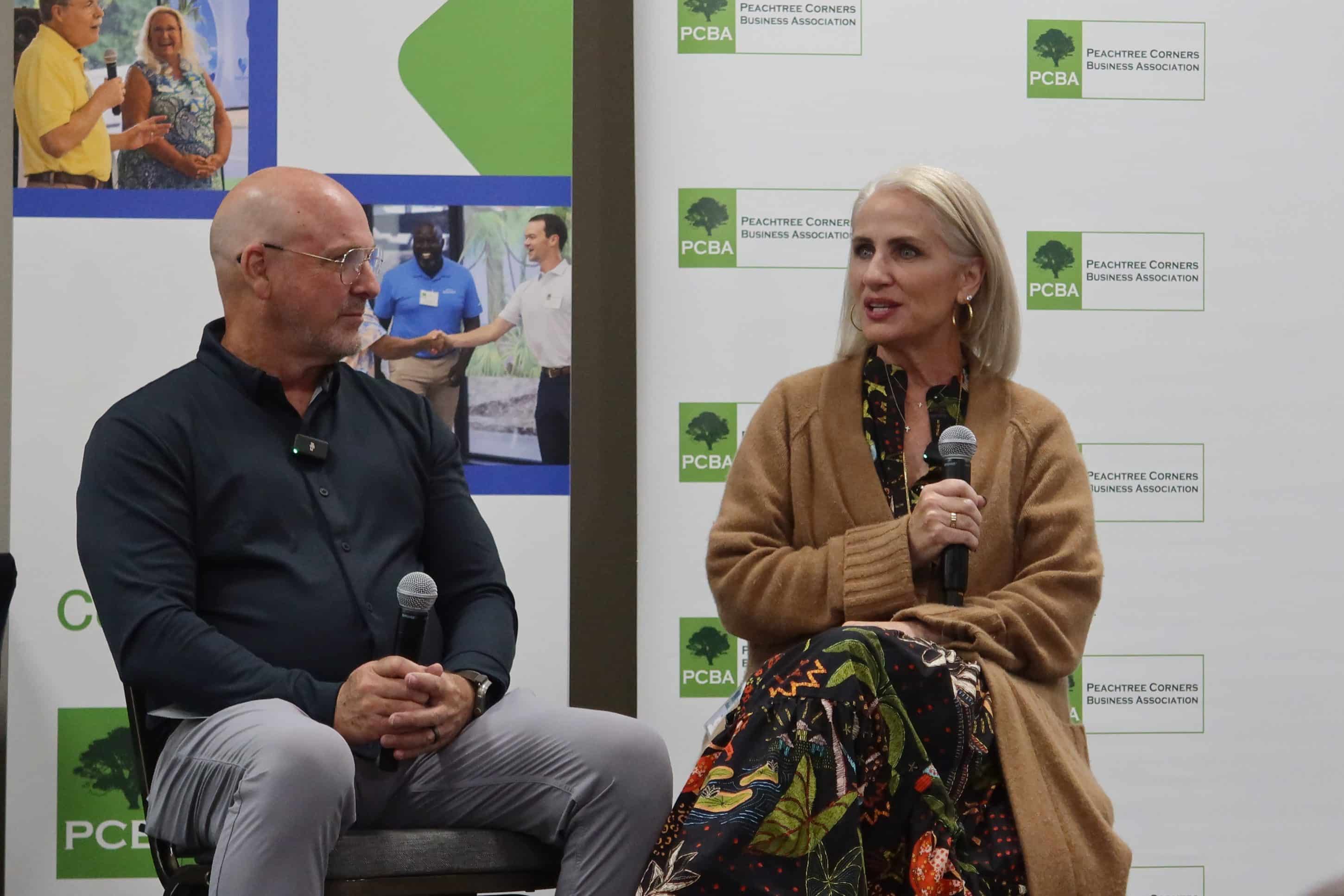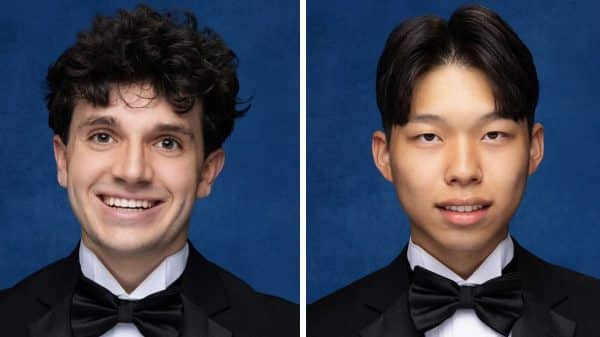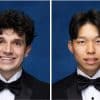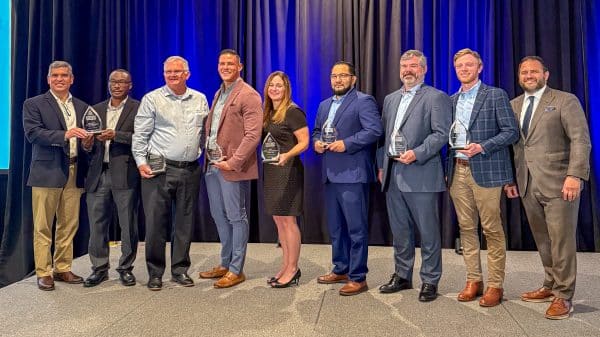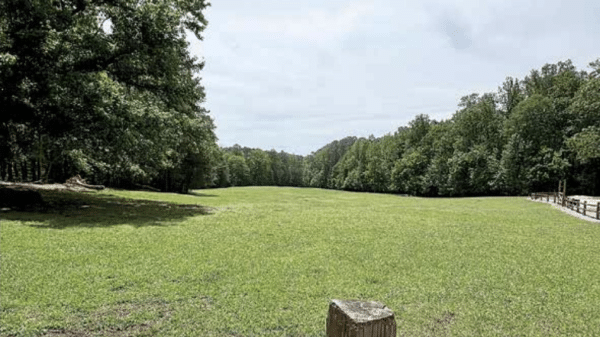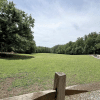Spectator sports are often compared to gladiator events of ancient times. The crowd gets a rush from the sight of a good tackle and the sounds of equipment clanging. But times have changed, and fans want their favorite athletes to leave the playing fields as intact as possible.
To emphasize the importance of preventing and managing sports injuries, the Peachtree Corners Business Association (PCBA) invited the founders of Guardian Sports, Erin and Lee Hanson, to its monthly Business After Hours Speaker Series on March 28 at Hilton Atlanta Northeast.
The Hansons were also joined by two Northside Hospital Orthopedic Institute Sports Medicine Concussion Program doctors, Dr. Abbi Feder and Dr. Daniel Charek.
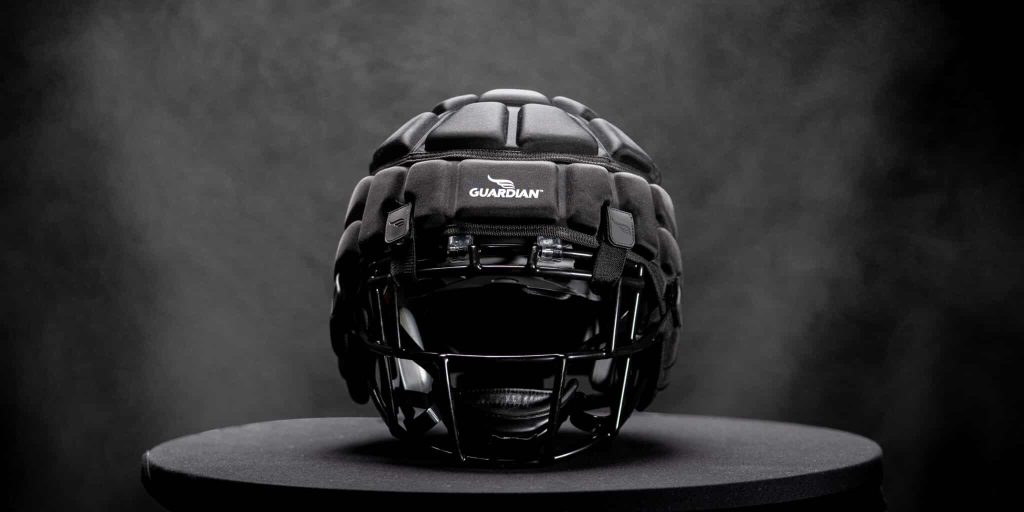
The inspiration behind Guardian Caps
As parents to five children, the Hansons have been involved in youth sports for many years. When a client was looking for a flexible helmet, the Hanson Group, a company specializing in material science and specialty products for end-users, took up the challenge. Working with plastics, they are now supplying products to replace all the chemicals with plant materials in the plastics industry.
After engineering, gaining a patent and manufacturing the Guardian Caps, a flexible covering for football helmets, they knew they had a winner. But they appeared to be alone in their perception.
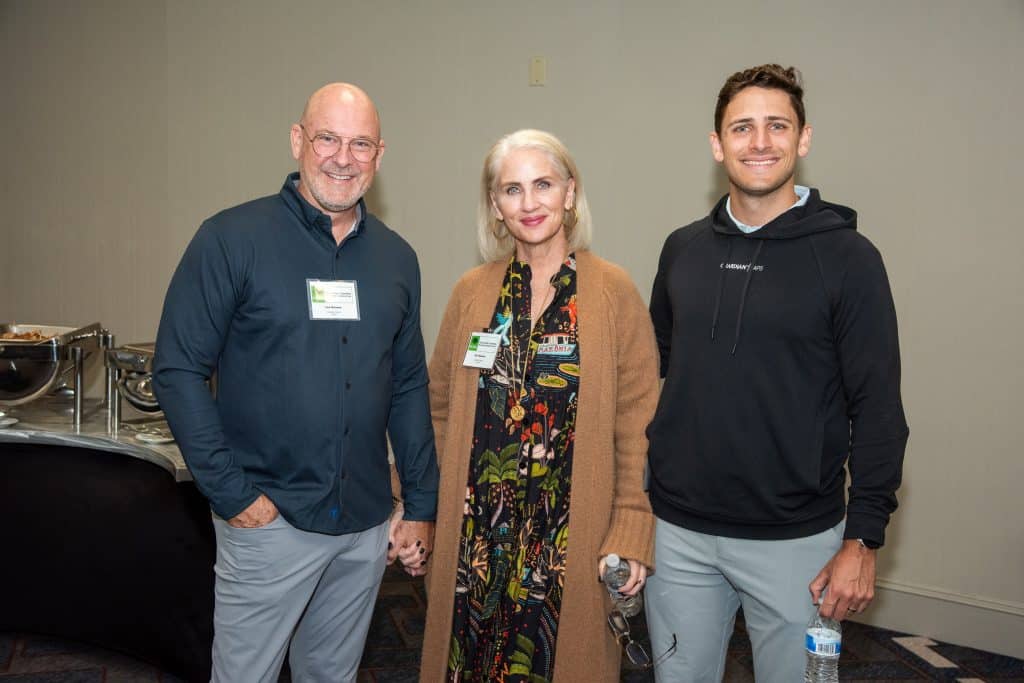
“Helmets have largely been unchanged since the 1960s when they switched from leather to polycarbonate,” said Lee. “They solved a problem of players having skull fractures, [but] … they weren’t anticipating … the damage to the brain from repetitive hits.”
They presented the soft-shelled helmet to sports executives but couldn’t convince them it was necessary for the sport.
“We were practically laughed out of the room,” said Lee.
“The language back then was, ‘Football is a TV revenue sport. … And we kind of need to hear the sound of those two helmets pressing together,’” said Erin. “We realized we were getting nowhere.”
With the youngest child nearing high school graduation, the Hansons were looking at an empty nest, a thriving business already in the works and no need to add more stress to their lives.
Not giving up
“But we realized this was important, and somebody needed to do something about it,” said Erin. “As a momma, you tell your child don’t hit your head … and then you pull up to football practice, and you let him out of the car, and you say go ahead [and hit your head.]”
So, they focused more on youth sports and the product’s affordability. Their youngest child, Jake, was a lacrosse player and a test dummy of sorts for the product that can be modified for any helmet. Guardian also makes helmet-less head coverings that help protect the head in sports where players don’t wear helmets.
“If we could make a difference, we needed to,” said Erin. “I don’t want to be in the helmet industry. The helmet industry is libelous. It’s like the medical industry; you’re taking a risk by getting into that.”
So, instead of reinventing helmets that pretty much do what they were set out to do, the Guardian Cap makes them safer and lessens the impact.
“We had to wait for science and lab testing to catch up,” said Erin. Everybody wants the proof. They want the data, and they want a peer-reviewed, published white paper.”
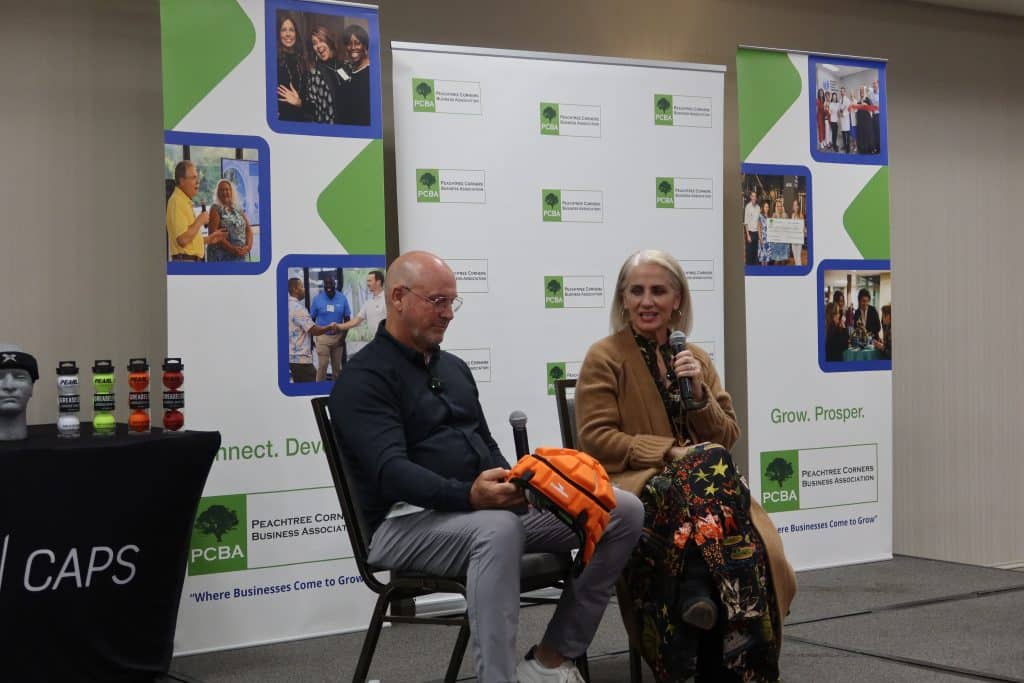
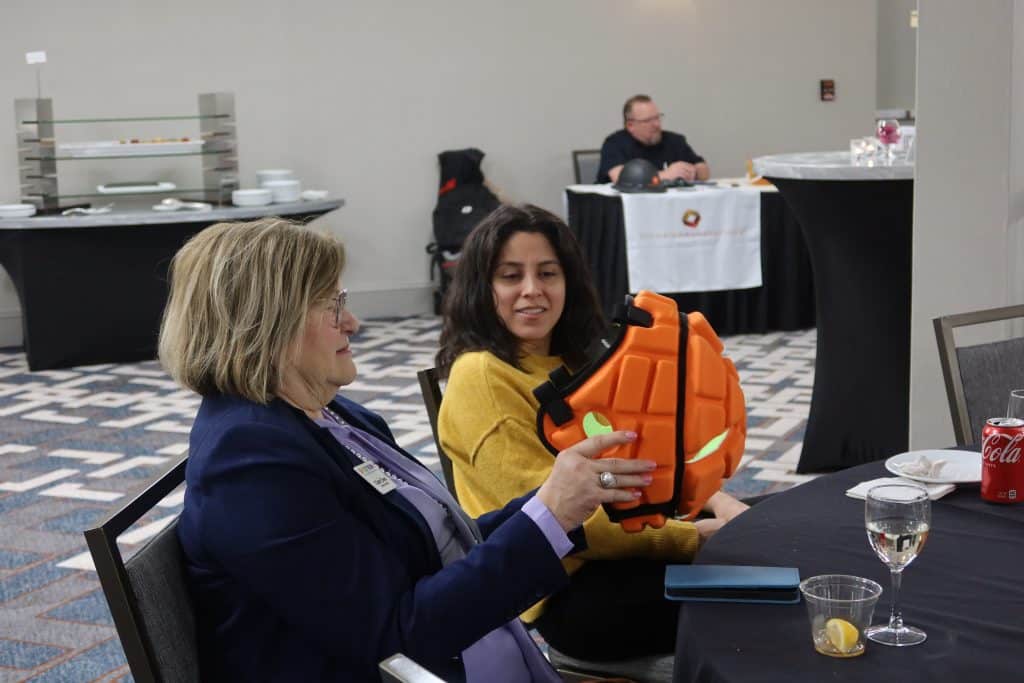
Virginia Tech ended up testing the product with hockey helmets. Then came the testing for football helmets, which basically involves dropping [the helmet with the Guardian Cap on] from the sky. It lands on a test plate that measures the forces.
“It’s not simulated like automobile testing. It’s pretty rudimentary, but now we have rotational testing to test rotational force,” said Erin. “It’s getting there. But our big challenge was people saying we can prevent concussions.”
She emphasized that it doesn’t prevent concussions; it reduces the impact, thus reducing the chance of a concussion.
Evolution of concussion treatment
Nothing can completely prevent a concussion when repetitive hits are involved. But the treatment the injured person receives can make a lot of difference in how they recover, when they recover and if they recover.
That’s why PCBA included concussion specialists in the event. PCBA donated funds to the program that evening.
“The PCBA is proud to donate a check for $500 to the Gwinnett Medical Center Foundation in support of the Northside Hospital Orthopedic Institute – Sports Medicine and Concussion programs in their efforts to improve the health of those suffering from head injuries and concussions,” said Lisa Proctor, PCBA President.
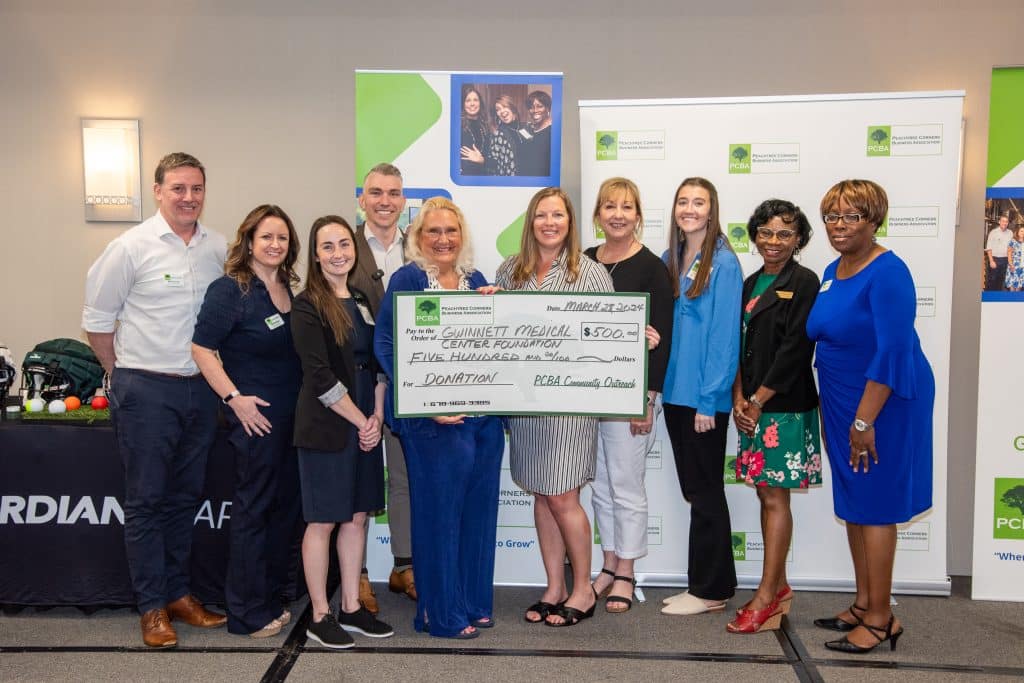
Northside Hospital Orthopedic Institute – Concussion; Dr Daniel Charek Northside Hospital Comprehensive Concussion Program; Lisa Proctor PCBA Board; Ginger Powell Gwinnett Medical Center Foundation; Marie Delong Gwinnett Medical Center Foundation; Shannon Butler Gwinnett Medical Center Foundation; Audrey Boyce PCBA Outreach; Donna Linden PCBA Board
“We basically see ourselves as a one-stop shop for all things related to concussion management,” said Charek. It’s a concussion specialty clinic that’s always seen sports neuropsychology as the point guard for our team.”
The Northside Concussion Program has patients undergo an evaluation to identify the injury and to figure out the types of concussion-related problems the individual has.
“What treatment do we need? How do we work to get them back into school, back into sports or back to work?” Charek added. “It’s an area that’s changed dramatically. If you knew someone with a concussion ten years ago, they were probably told to rest, stay in a dark room, and all your symptoms will go away.”
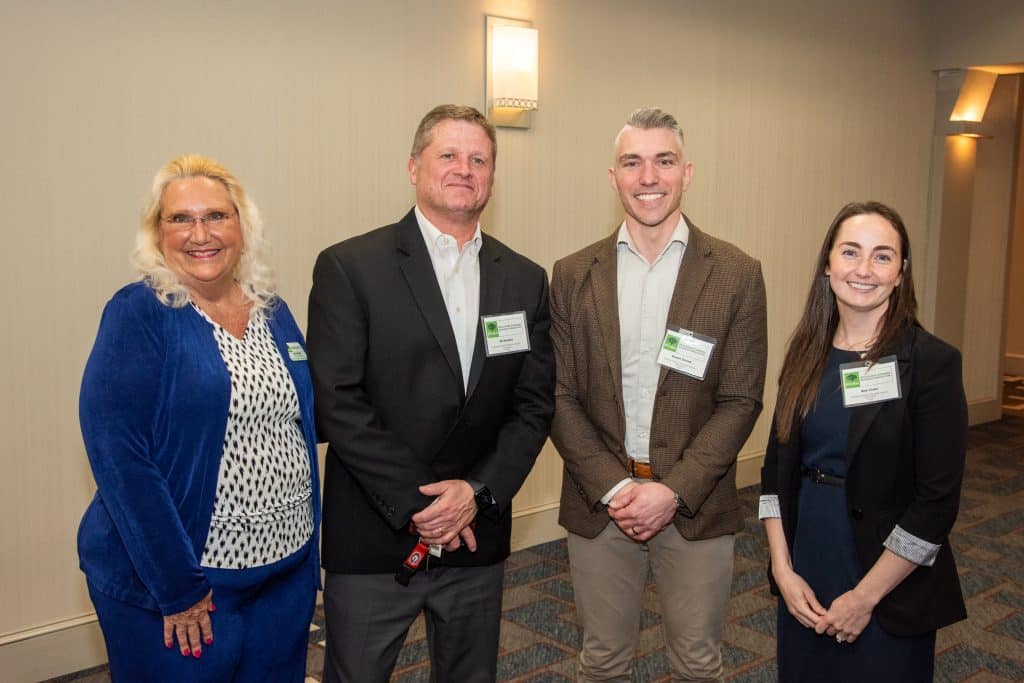
He added that treatment nowadays is much more active than it had been in the past.
“There’s a lot that we can do to help people get better sooner and also identify the injury in a much more objective way,” Charek said. “With all those changes, a big part of what we do is education and outreach.”
Dr. Feder agreed.
“One of the things research is very clear about is people who have realistic expectations and education around the injury do much better in recovering from the injury,” she said. “There’s a lot of anxiety that can come with this injury, and if you don’t know what to expect, you can set people up for failure.”
Education is a big part of treatment
“We tell them, ‘This is what you should expect. This is what you should look out for. This is what might happen if you do have an injury, and this is how we’re going to get you back into school, sports and things of that nature,’” she said.
The doctors also try to raise awareness with coaches, parents and athletic organizations.
“The other thing that research is very clear about is the people who do the worst with concussions are people who get concussed and play through that injury,” said Feder. “We’ve done some research that showed people who continue to play on average 15 to 20 minutes took twice as long to recover as those who came straight off the field.”
Even if they don’t get hit again, leaving the field is important for injured players. People who have the most problematic outcomes are those who keep playing and take another hit, she added.
“We have very good active treatments that we can do to get people better, and those didn’t exist in the past,” Feder said.
Curated treatment plans
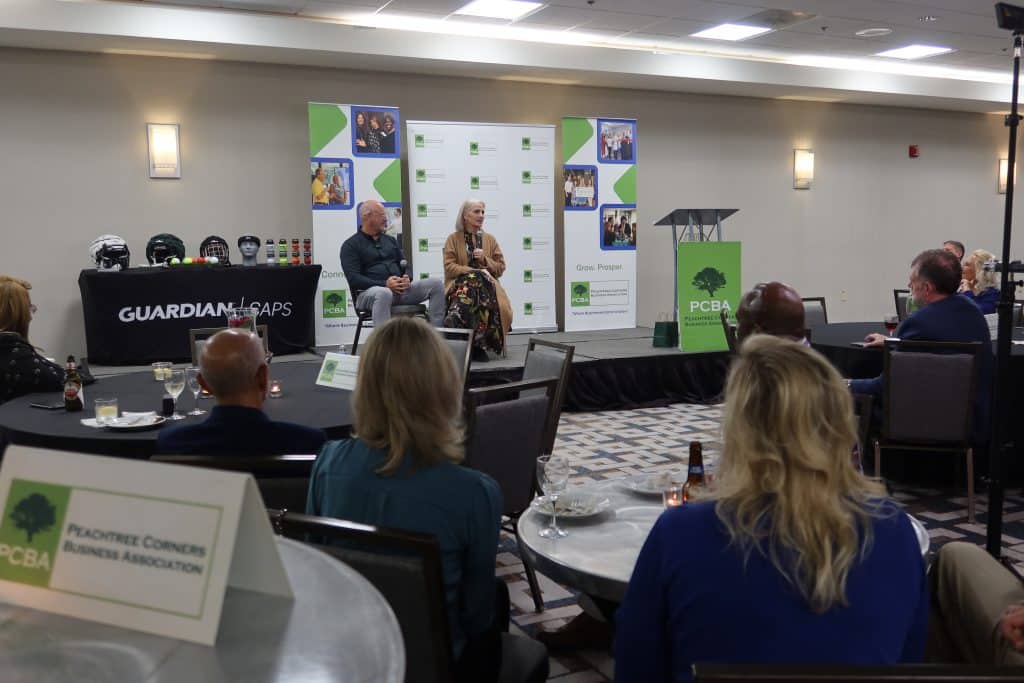
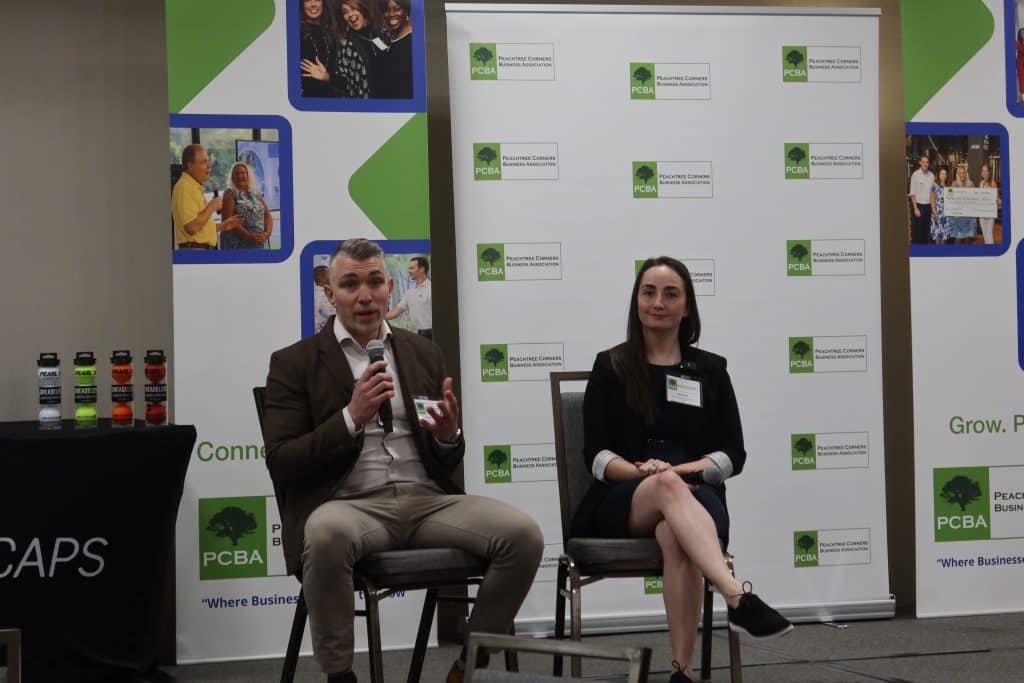
The program has been able to adapt some of our telecommunication pathways in order to give patients a targeted treatment plan that works specifically for their needs.
When it comes to concussion evaluation, it used to be an interview with questions like, Do you have a headache? Do you feel dizzy?
Evaluations now include objective indicators that give doctors a lot more confidence to know when a concussion has occurred and when somebody has recovered fully from a concussion.
This includes:
- Cognitive testing: looking at their memory, their speed of processing things,
- Vestibular screening: looking at balance and inner ear function and
- Ocular screening: looking for possible vision problems.
Some of these tests can be performed on a limited basis on the sidelines and then more extensively in a doctor’s office.
“One of the hardest things we see is that a softball athlete thought they were going to be ready to go back to the game, but three days later, they need a more prolonged recovery,” said Charek. “It’s heartbreaking for [the athlete]. So we’d rather know on the front end and do … therapies earlier.”
Even though the diagnosis and treatment of concussions has come a long way, it’s still important to treat it as seriously as a torn ACL or a break, both doctors stressed.
Photo caption: (left) Lee and (right) Erin Hanson courtesy of the Peachtree Corners Business Association


